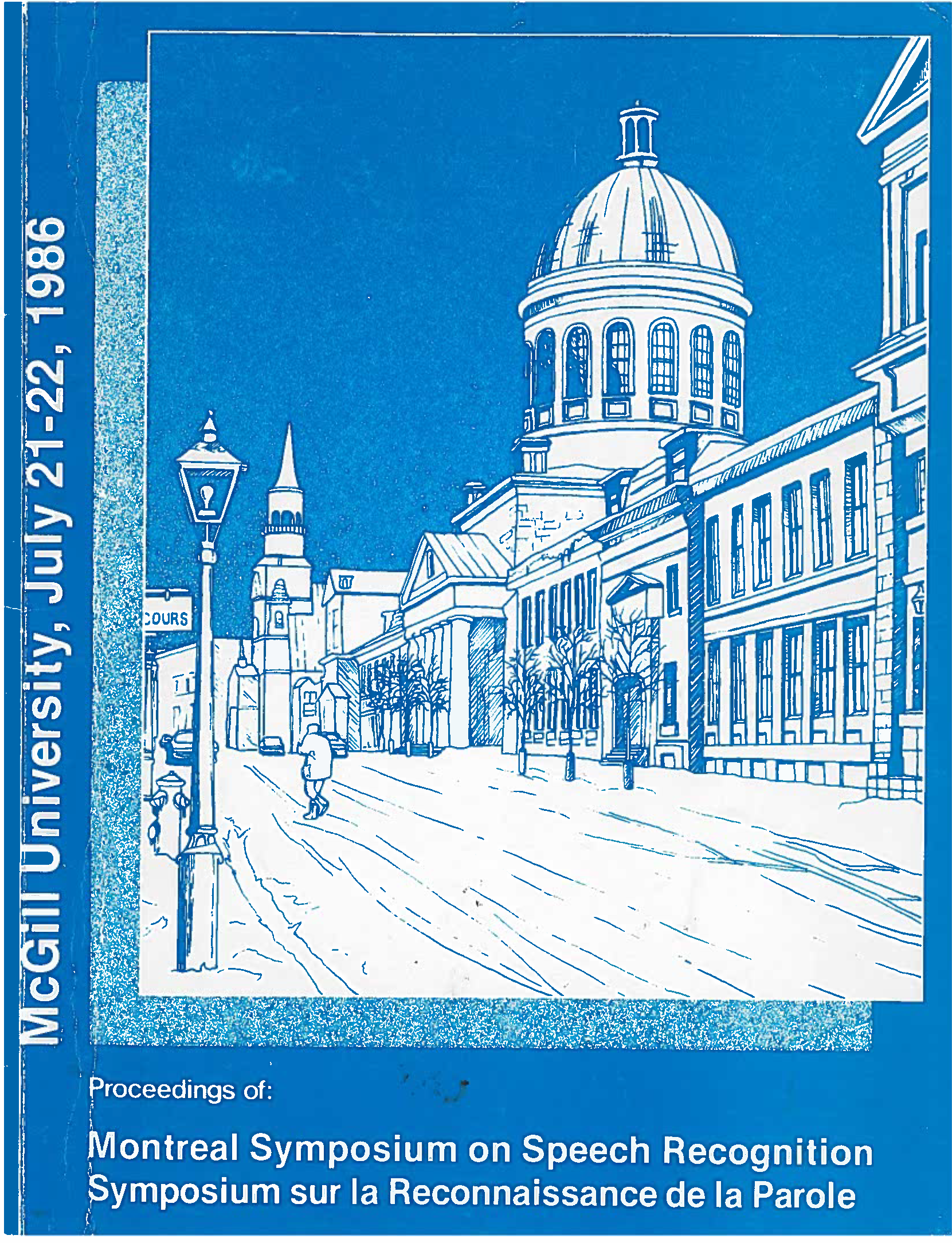Peripheral Preprocessing In Hearing And Psychoacoustics As Guidelines For Speech Recognition
Résumé
Modem electronic equif'llent realizi network of system-theory as well as signal-theory strategies was a strong motor within the last 15 years pushing speech recognition systems to better and better results (for summaries see for example DeMori, 1979; Terhardt, 1978). Nevertheless, this progress is not comparable with the much larger progress of the data processing system like computers, memories, signal processors. Therefore we may ask for other and better guidelines to organize speech recognition systema. since the human hearing system is still by far the best speech recognition system in every respect, it may be very helpful to simulate this system as much as we know about it. This idea is not new. Our re search group seems to offer proposals in this direc tion each seventh year (Zwicker, 1971; Zwicker et al., 1979), this paper included. Other groups have accepted this aR?roach in part by using critical band filtering CKlatt, 1982), by using loudness-time func tions for segmentation !Mermelstein, 1975; Schotola, 1984), or more in general by using loudness-critical band rate-time patterns as preprocessed data base (Ruske, 1985 and this vol ume►.
Fichiers supplémentaires
Publié-e
Comment citer
Numéro
Rubrique
Licence
Author Licensing Addendum
This Licensing Addendum ("Addendum") is entered into between the undersigned Author(s) and Canadian Acoustics journal published by the Canadian Acoustical Association (hereinafter referred to as the "Publisher"). The Author(s) and the Publisher agree as follows:
-
Retained Rights: The Author(s) retain(s) the following rights:
- The right to reproduce, distribute, and publicly display the Work on the Author's personal website or the website of the Author's institution.
- The right to use the Work in the Author's teaching activities and presentations.
- The right to include the Work in a compilation for the Author's personal use, not for sale.
-
Grant of License: The Author(s) grant(s) to the Publisher a worldwide exclusive license to publish, reproduce, distribute, and display the Work in Canadian Acoustics and any other formats and media deemed appropriate by the Publisher.
-
Attribution: The Publisher agrees to include proper attribution to the Author(s) in all publications and reproductions of the Work.
-
No Conflict: This Addendum is intended to be in harmony with, and not in conflict with, the terms and conditions of the original agreement entered into between the Author(s) and the Publisher.
-
Copyright Clause: Copyright on articles is held by the Author(s). The corresponding Author has the right to grant on behalf of all Authors and does grant on behalf of all Authors, a worldwide exclusive license to the Publisher and its licensees in perpetuity, in all forms, formats, and media (whether known now or created in the future), including but not limited to the rights to publish, reproduce, distribute, display, store, translate, create adaptations, reprints, include within collections, and create summaries, extracts, and/or abstracts of the Contribution.


